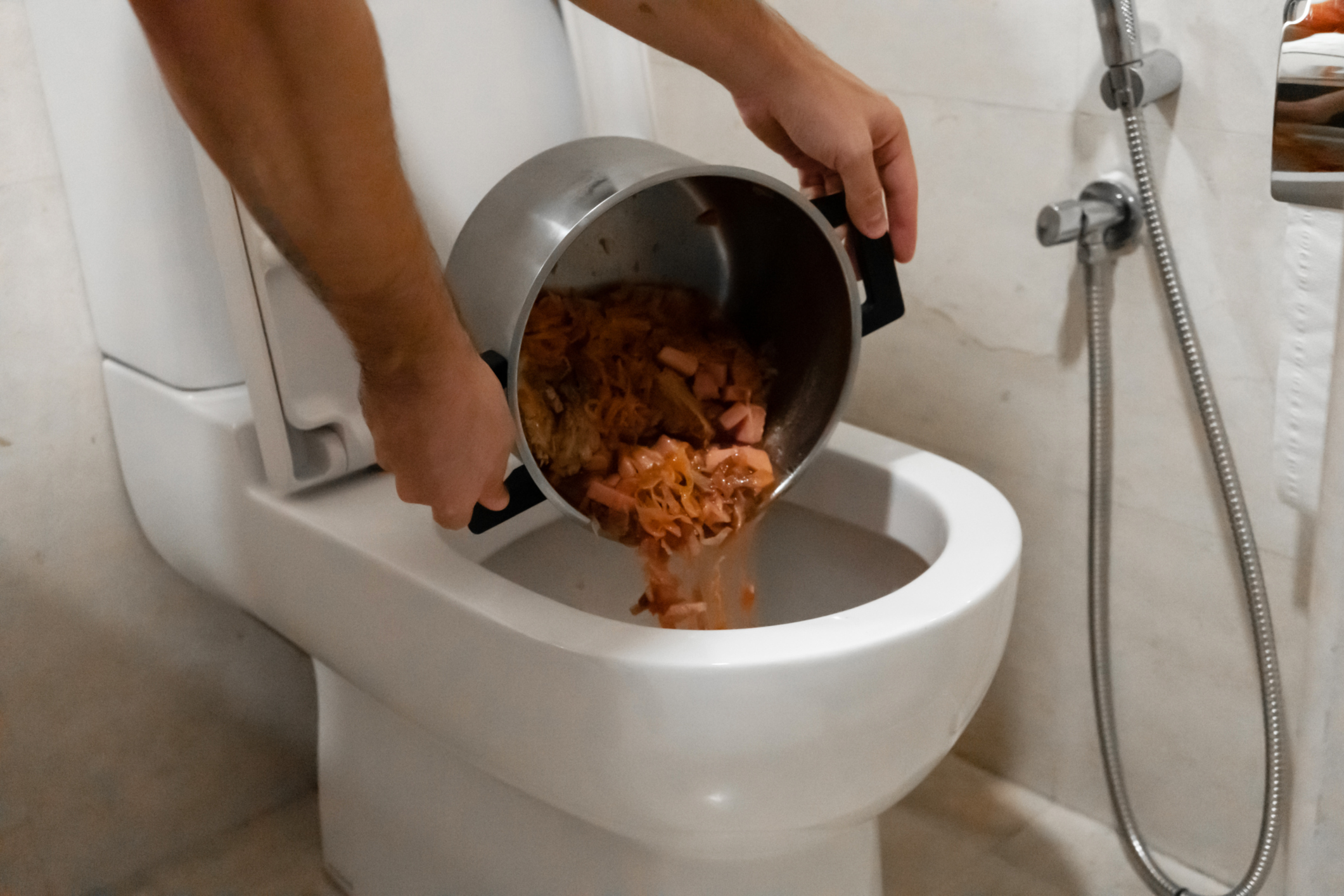They are making a few great annotation on Is it safe to flush food (especially rice) down the toilet? overall in the article which follows.

Intro
Lots of people are frequently faced with the problem of what to do with food waste, especially when it involves leftovers or scraps. One common inquiry that emerges is whether it's all right to purge food down the bathroom. In this write-up, we'll explore the reasons why individuals might take into consideration purging food, the effects of doing so, and alternate approaches for appropriate disposal.
Reasons that people might take into consideration purging food
Lack of understanding
Some individuals might not recognize the prospective damage caused by purging food down the commode. They might mistakenly believe that it's a harmless method.
Ease
Purging food down the toilet might appear like a fast and very easy solution to dealing with unwanted scraps, specifically when there's no close-by trash bin readily available.
Negligence
In some cases, individuals might merely select to flush food out of large laziness, without considering the consequences of their actions.
Effects of flushing food down the commode
Ecological influence
Food waste that ends up in waterways can contribute to pollution and injury marine ecosystems. Furthermore, the water utilized to purge food can stress water sources.
Pipes issues
Purging food can lead to clogged up pipelines and drains, triggering costly pipes repair work and aggravations.
Types of food that need to not be flushed
Fibrous foods
Foods with fibrous textures such as celery or corn husks can get entangled in pipelines and create clogs.
Starchy foods
Starchy foods like pasta and rice can soak up water and swell, bring about clogs in pipes.
Oils and fats
Greasy foods like bacon or cooking oils ought to never be purged down the bathroom as they can strengthen and create blockages.
Appropriate disposal methods for food waste
Utilizing a garbage disposal
For homes geared up with garbage disposals, food scraps can be ground up and flushed via the pipes system. Nevertheless, not all foods are suitable for disposal in this fashion.
Recycling
Particular food product packaging materials can be reused, reducing waste and lessening ecological influence.
Composting
Composting is an environmentally friendly way to throw away food waste. Organic products can be composted and used to enrich soil for horticulture.
The relevance of appropriate waste monitoring
Minimizing ecological damage
Proper waste monitoring techniques, such as composting and recycling, assistance reduce air pollution and protect natural deposits for future generations.
Safeguarding pipes systems
By preventing the technique of flushing food down the bathroom, homeowners can prevent expensive pipes repairs and maintain the integrity of their pipes systems.
Final thought
Finally, while it might be alluring to flush food down the bathroom for comfort, it is essential to comprehend the prospective repercussions of this action. By embracing proper waste monitoring techniques and taking care of food waste properly, individuals can contribute to healthier pipes systems and a cleaner environment for all.
THINK TWICE BEFORE FLUSHING FOOD DOWN YOUR TOILET IN FALLBROOK CA
Let’s be honest, we’re really supposed to be tossing rotten or leftover food in the compost bin or trash can. But many people like to place scraps of food down the drain of, say, their kitchen sink. That’s why the garbage disposal was invented: so we can continue to place certain foods down the drain without clogging our drain in the process. Smart.
But not all of us have the luxury of having a garbage disposal installed. So, you might continue to shove food down your sink drain anyway – or worse: you might flush them down your toilet! If you’re guilty of doing the latter, you’re going to want to stop, and here’s why:
Toilet Drains Aren’t Designed to Handle Food!
There’s your answer: food just doesn’t belong in your toilet. It may seem like your toilet drain is wider than the drains of your sinks, but truth be told, that isn’t actually the case. The narrower pipes of your toilet leave your plumbing at risk for clogging if you do happen to flush your food. In addition, food doesn’t break down as quickly that toilet paper and human waste do. In turn, this leaves your toilet at risk for a nasty clog.
Although a flush of a tiny pinch of food every now and then isn’t going to completely damage your toilet, there are certain foods that should absolutely not be flushed in your toilet at all. These include starchy foods like mashed potatoes, grains, hard pieces of food that are slow to break down, and fats and oils.
The latter categories of food are particularly problematic as they may harden, expand as they absorb water, break down slowly in your system, or generally create the perfect obstruction with their gelatinous composition. These are all things you don’t want in your plumbing system!
Experiencing a Toilet Clog?
Nobody’s perfect, and we all make mistakes. Sometimes one of the mistakes people make is flushing food down their toilet and later realizing that it wasn’t the best thing to do once they see that their toilet is now clogged. Uh-oh!

I ran across that write up about What Can Happen If You Flush Food Down the Toilet? when exploring the internet. Please pause to promote this blog entry if you enjoyed it. Kudos for being here. Don't hesitate to check our website back soon.
Call Today